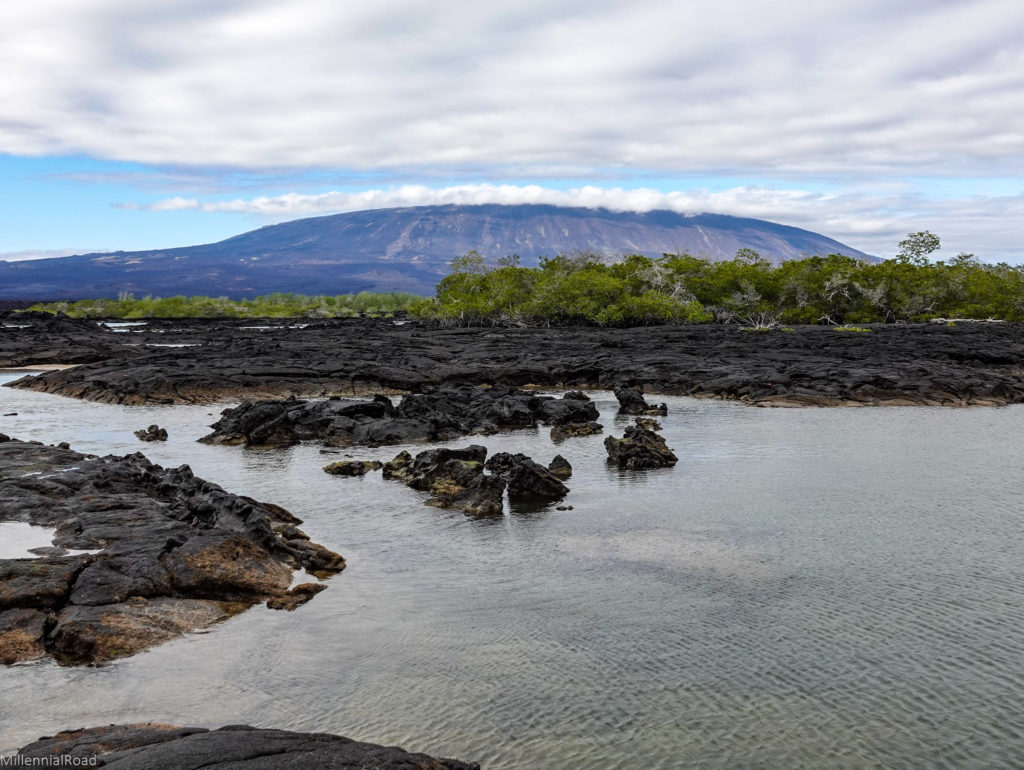
Fernandina Island, the youngest and westernmost island in the Galápagos Islands, remains an active volcano, with eruptions as recent as 2009. This recent volcanic activity has resulted in a landscape cloaked in black lava rock and extremely limited plant life.
Cactus plants, mangrove trees, and algae provide the limited green that can be seen on the island. What the island lacks in plant life, it more than makes up for with wildlife.
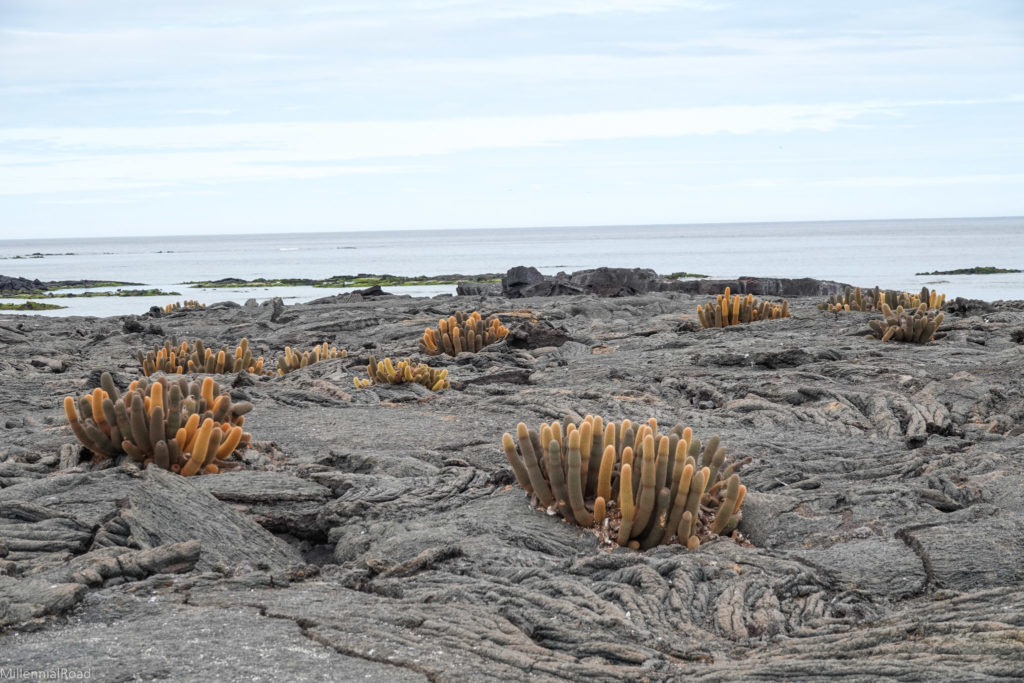
Fernandina Island is teeming with penguins, sea lions, pelicans, cormorants, lava lizards, and so much more.
The highlight, however, is the massive groups of marine iguanas that can be found gathering on the black lava rock onshore or swimming and eating in the ocean nearby.
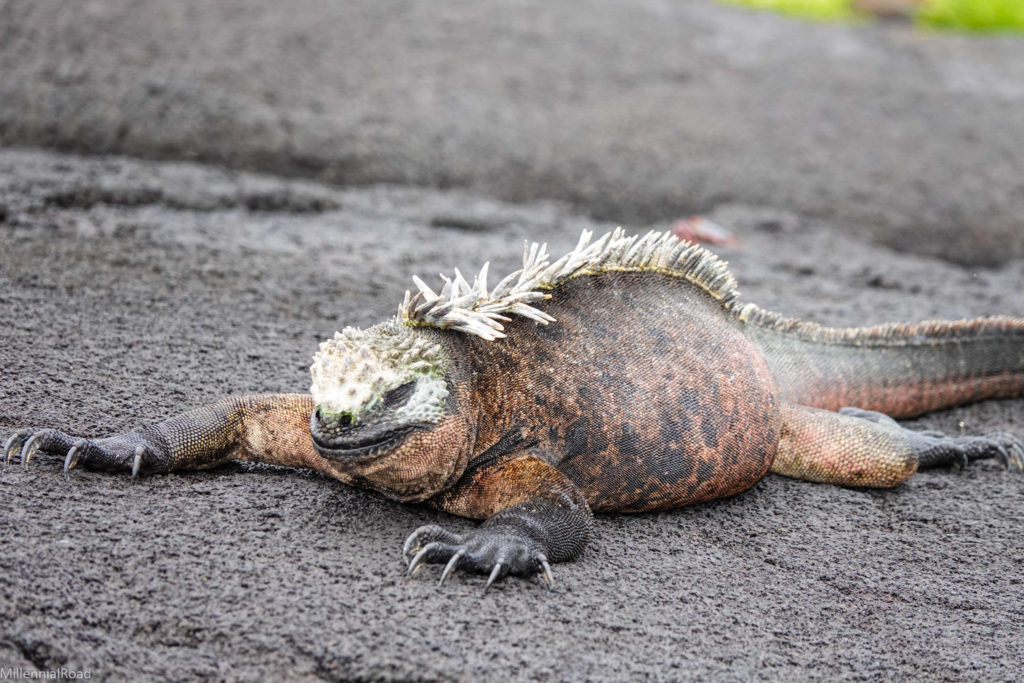
Most of us cannot help but find it captivating to watch an animal eat in its natural habitat. If that interests you, imagine the more unique experience of watching a wild animal eat underwater. Based on our experience, these types of encounters are plentiful on Fernandina Island.
Read along as I paint a picture of the incredible wildlife encounters that we had on Fernandina Island, as well as some highlights from our final stop at my new favorite island—Isabela Island—where we swam with penguins, sea lions, and more sea turtles than I ever imagined could be found in the same area.
Punta Espinosa, Fernandina Island
We began the morning with a hike at Punta Espinosa on Fernandina Island. As we disembarked the panga, we immediately stepped out into hundreds of marine iguanas. It was almost unimaginable to see so many iguanas gathered together.
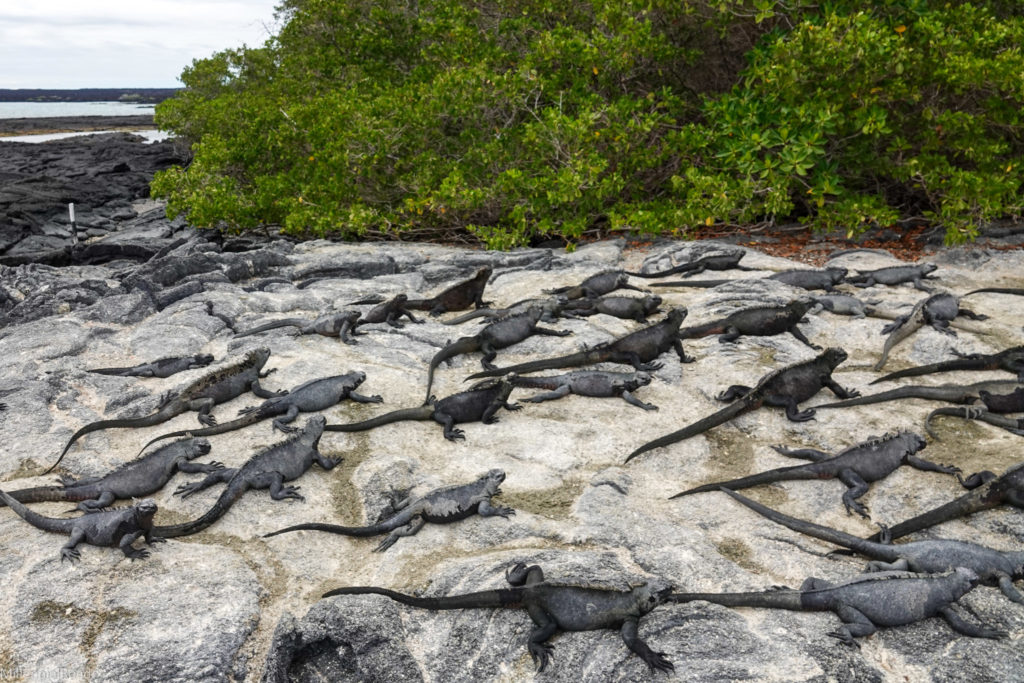
We continued hiking past the iguana-filled area to see a bit more of the island before returning to this same spot.
Much to our surprise, we stumbled upon a lava lizard eating a locust during our walk.
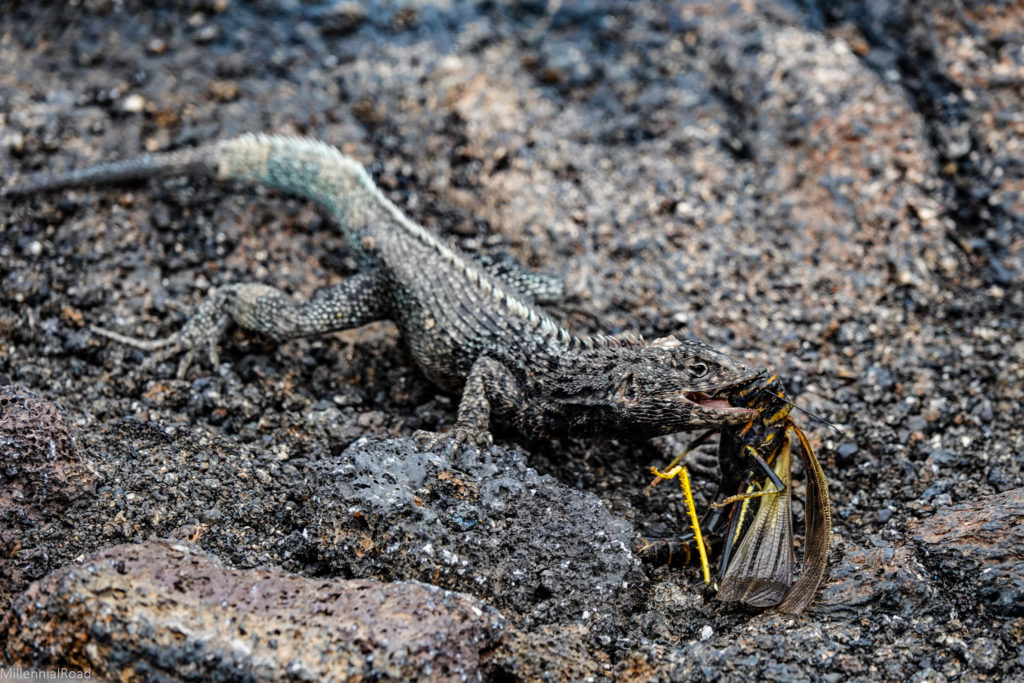
The locust was nearly half of the size of the lizard. Captivated by this sight, we stayed there watching the lava lizard attempt to kill and eat the locust for about 10-15 minutes. And it still was not done eating when we decided to continue on our path!
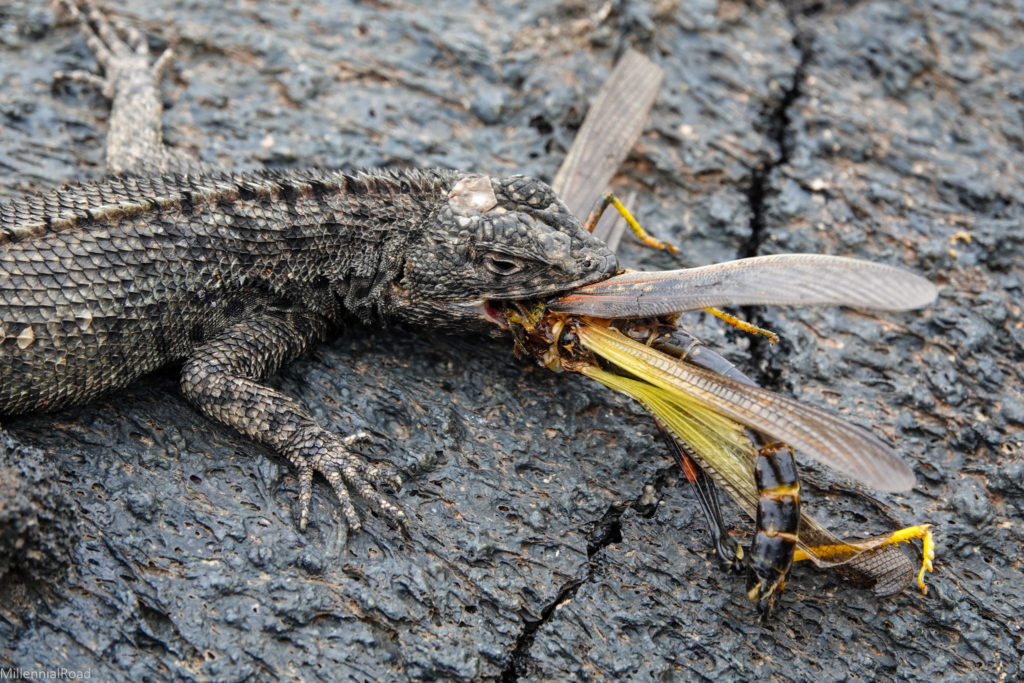
We passed back by the same spot about 30 minutes later, and it appeared the lizard had finished its meal for the day. I suspect that was one happy lava lizard after such a big breakfast.
Towards the endpoint of the hike, we made our way to a small lagoon. Several sea turtles were scattered across the lagoon, some swimming while others lounged on the banks.
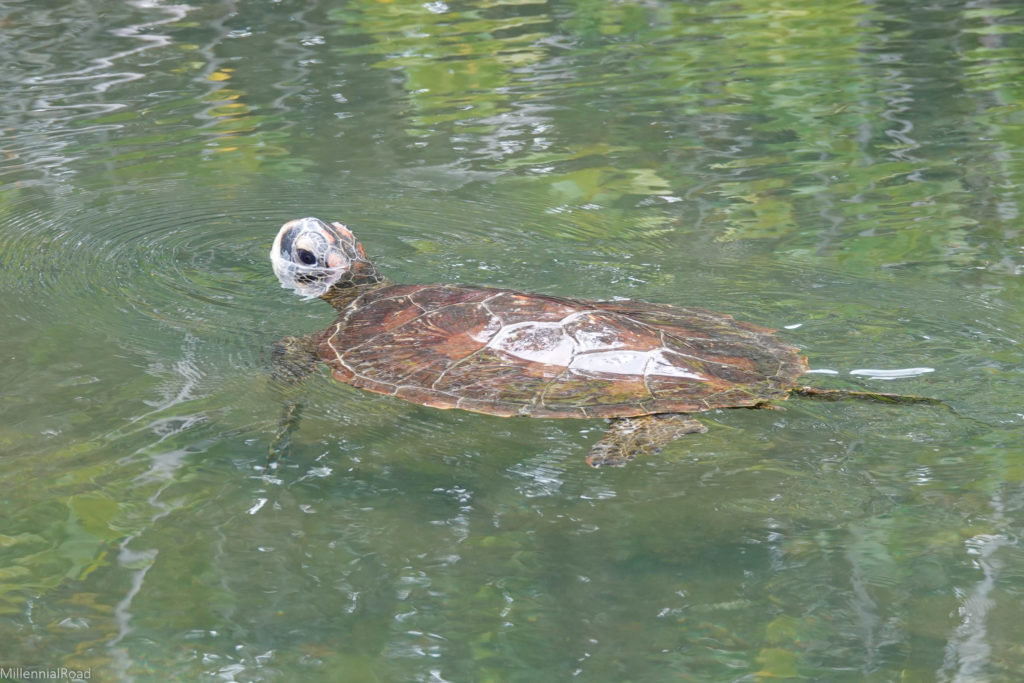
A lone sea lion floated on its back across the middle of the pond. We’d seen countless sea lions basking on the beach and swimming circles around us in the water at this point of our cruise, but I had yet to see one floating casually.
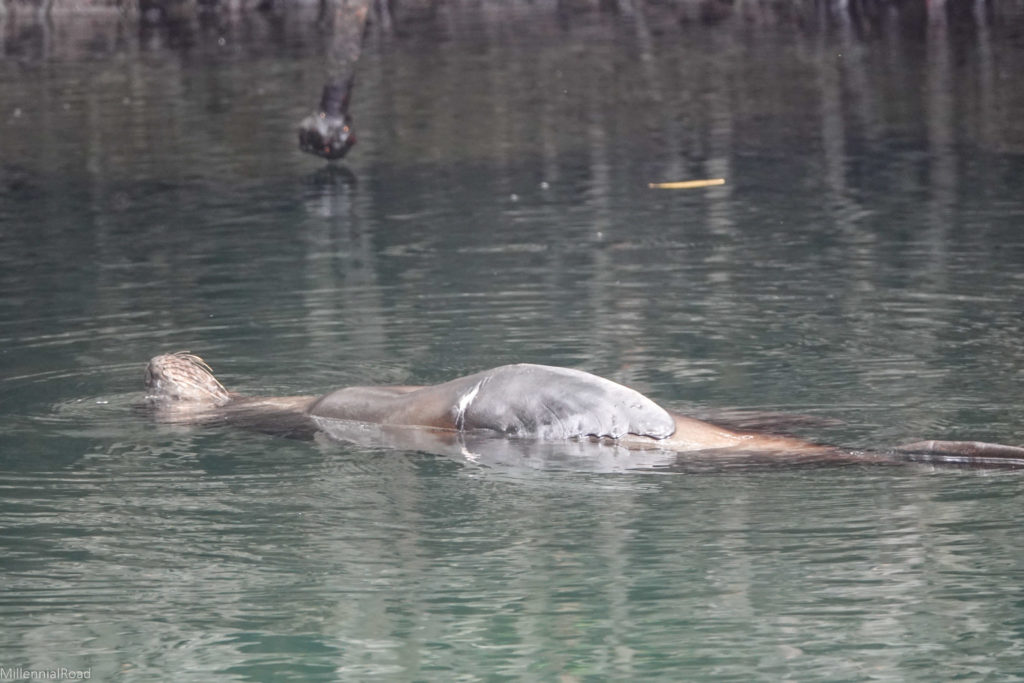
I can’t explain why, but something about how relaxed it looked just made me feel happy. We should all feel as carefree as this sea lion appeared.
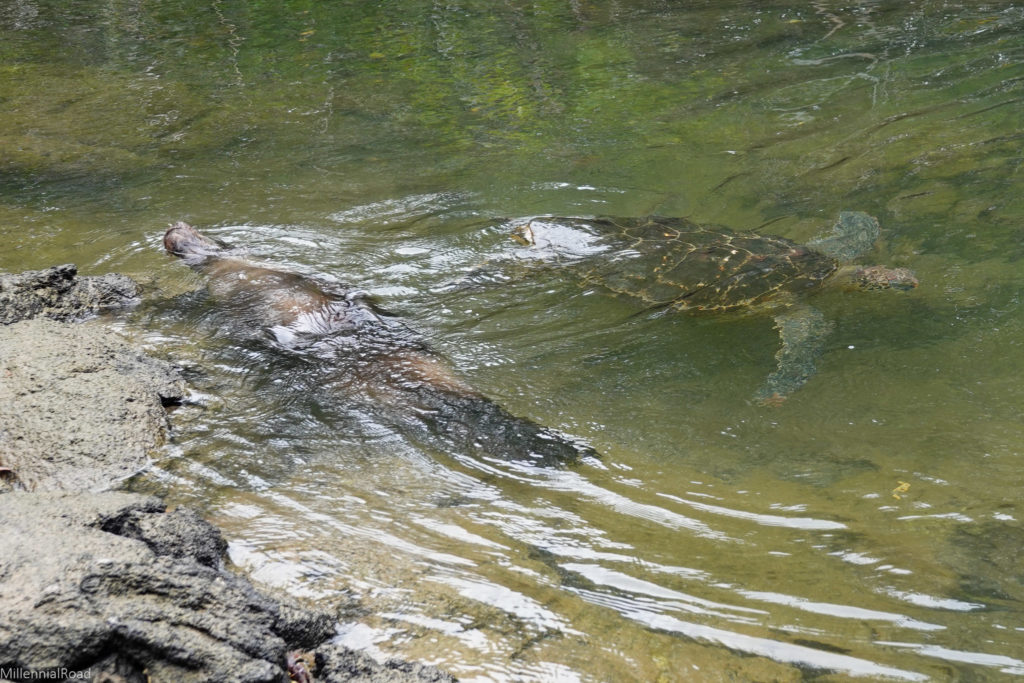
After spending some time at the lagoon, we made our way back out of the hike. We came across several small groups of sea lions and cormorants along our hike, each with adorable youngsters among them.
A mother sea lion sprawled across a rock, nursing two of her pups. Both young sea lions gladly enjoyed the benefit of their mother’s offer, though one of them may have been a tad old to still be nursing. I think you’ll know which one I’m referring to after a quick glance at the photo below.
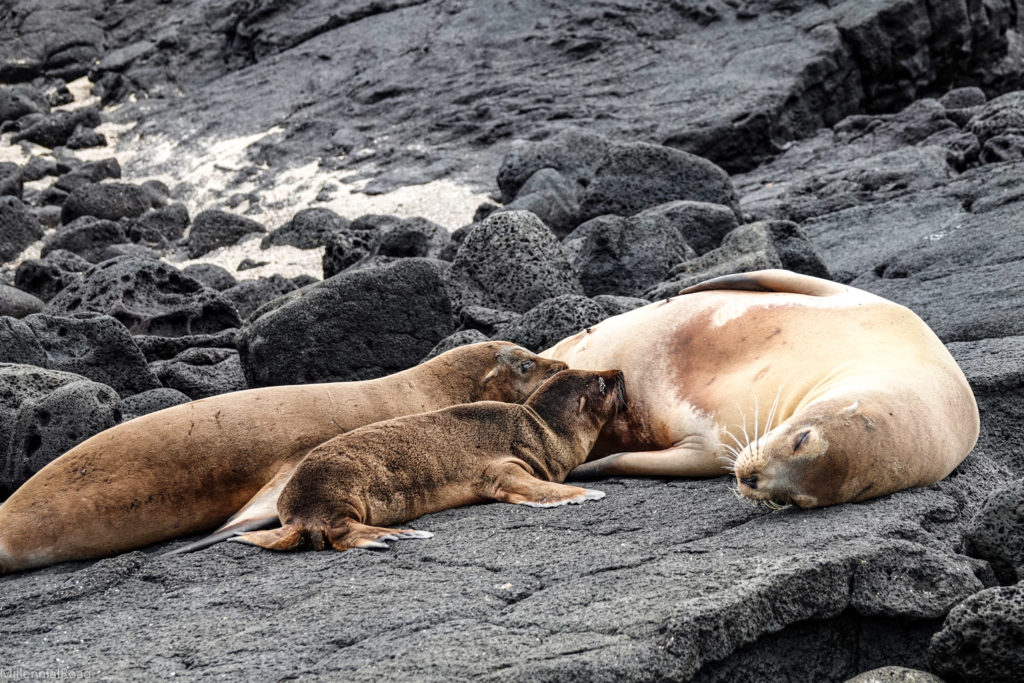
When we arrived back at the starting point, there were at least triple the number of marine iguanas than when we began the hike. It was unbelievable.
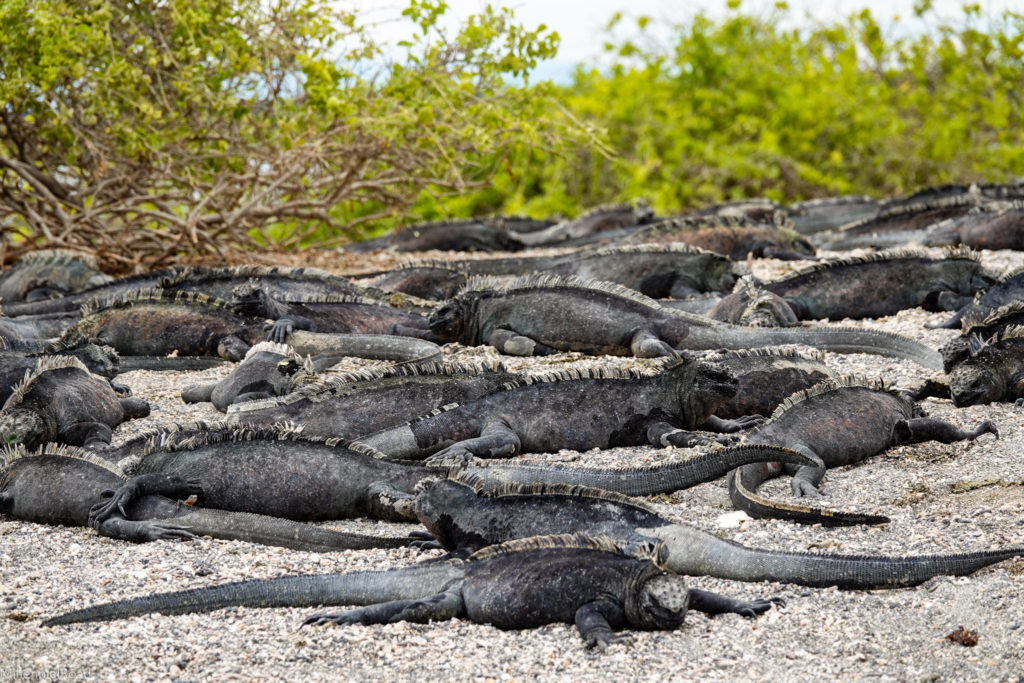
Iguanas were dispersed across the rocks in groups, some groups probably containing more than 100 iguanas in one small area. One after another, iguanas would swim up from the water, crawl out onto the rocks, and then snort water out of their nostrils.
And it was not a small amount of snot! That continues to entertain me every time I think of it.
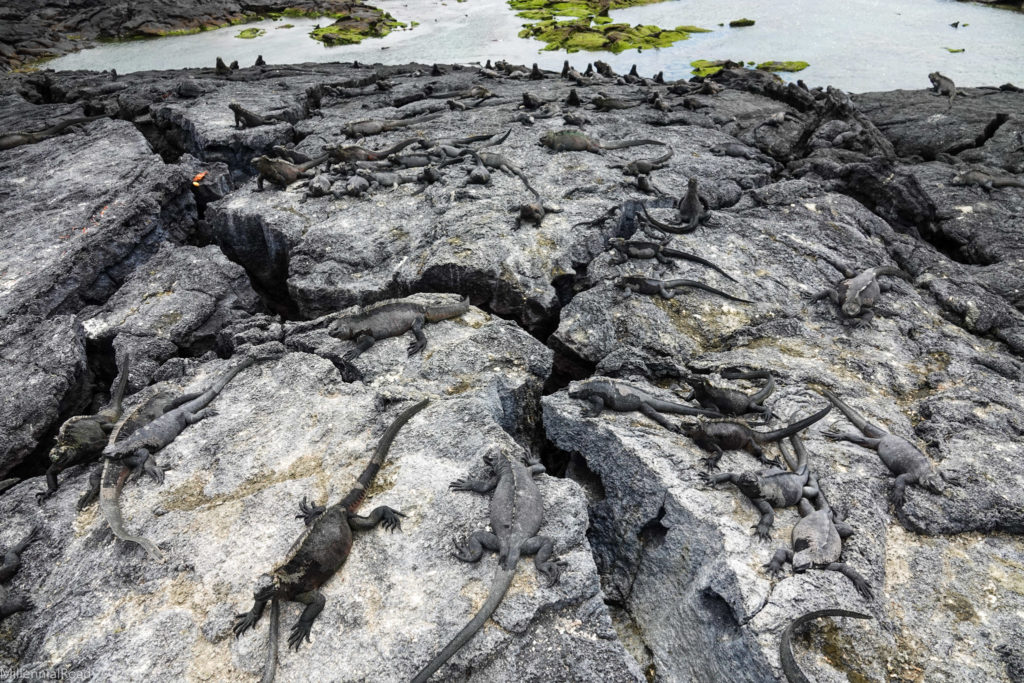
After the hike, we went snorkeling in the nearby area at Punta Espinosa on Fernandina Island. The plan for the snorkel was to see marine iguanas eating algae under the water. This was undoubtedly a success, but it was so much more than just that.
We watched marine iguana after marine iguana nibbling on the algae underneath the water. As they gnawed away at the green goodness, they gripped onto the rocks with their claws so that they could maintain their position in the rough current.
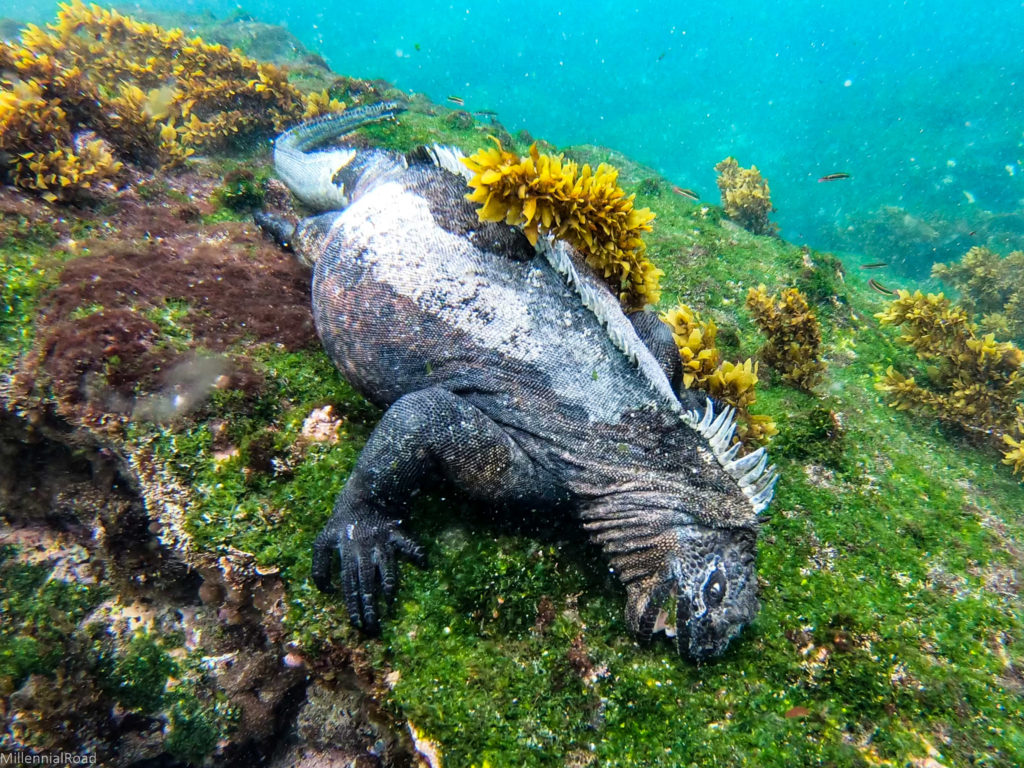
They are impressively good at clinging onto the rocks in that way. I would often try to grab and hold a boulder to watch them eating for an extended time and could not hold on for more than 10 seconds or so before losing grip due to the current. Our “claws” are so unhelpful!
Watching the iguanas swim under the water was captivating. The way they move their bodies is almost snakelike. I couldn’t look away as I watched them effortlessly transition back and forth from swimming above and below the water.
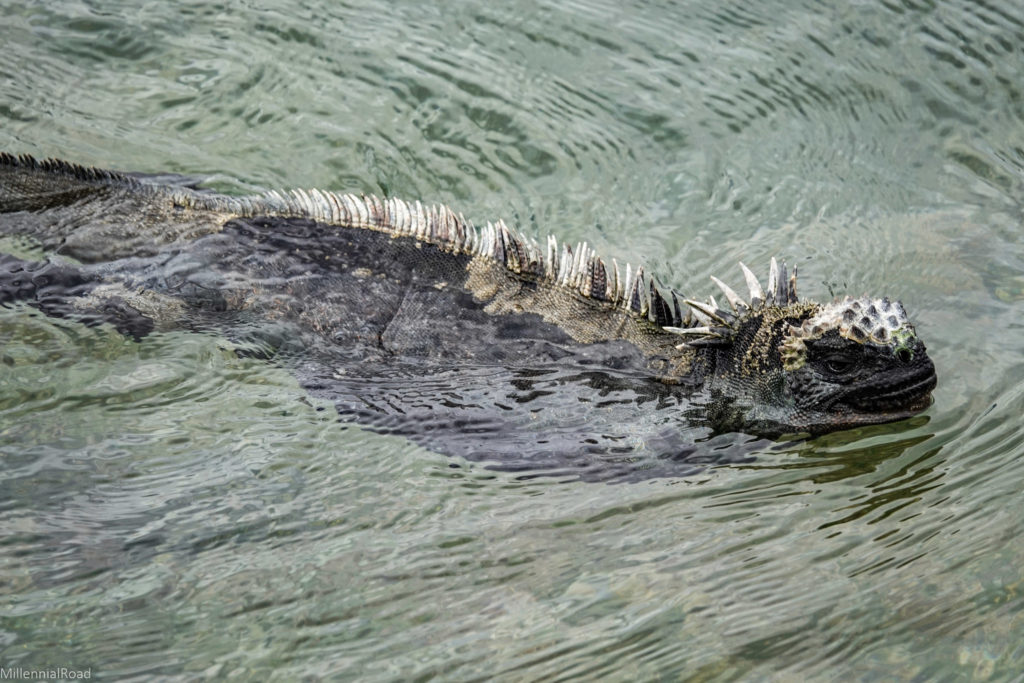
Sea turtles and sea lions were also abundant in this area. Polar opposites, the sea turtles floated carelessly and the sea lions dashed playfully beneath the water, all in harmony with the marine iguanas.
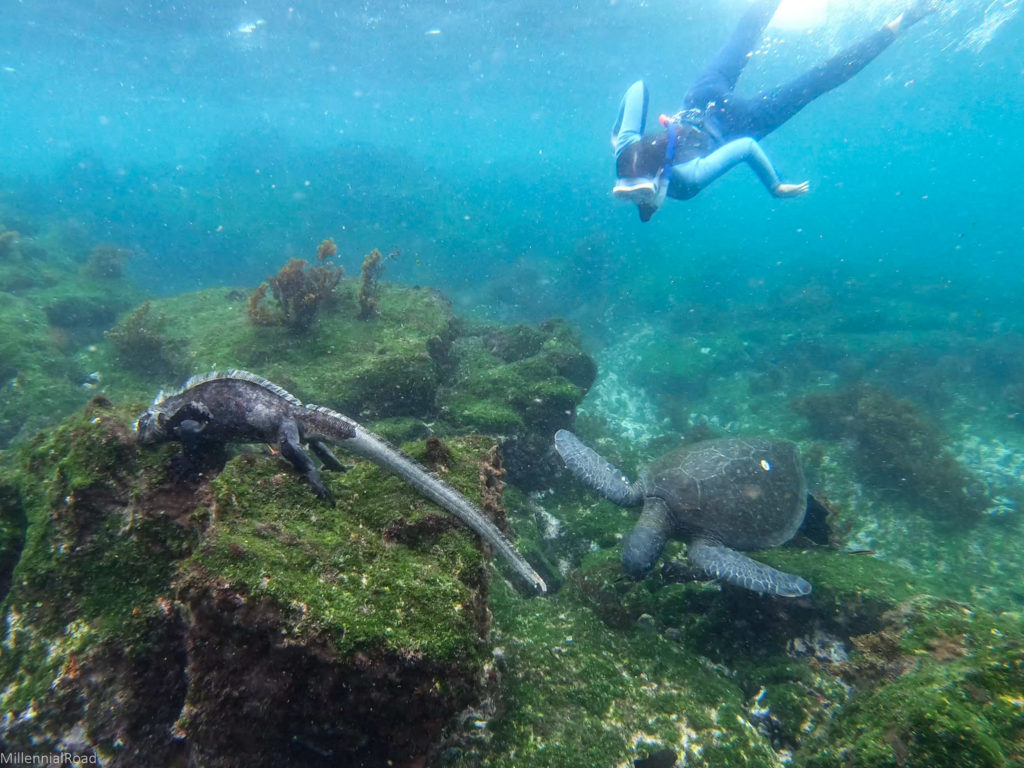
These sea lions were particularly active. One sea lion started darting past us at an incredibly high speed and circling us the moment we dove off the panga into the water. He was having so much fun. We all were!
We spent the entire hour that we were snorkeling rotating between swimming with sea lions, sea turtles, and iguanas. It felt like a dream.
Punta Vicente Roca, Isabela Island
As if our day had not already been spectacular enough, we squeezed in a second snorkel at Punta Vicente Roca on Isabela Island. The highlight of the snorkel was the massive number of sea turtles.
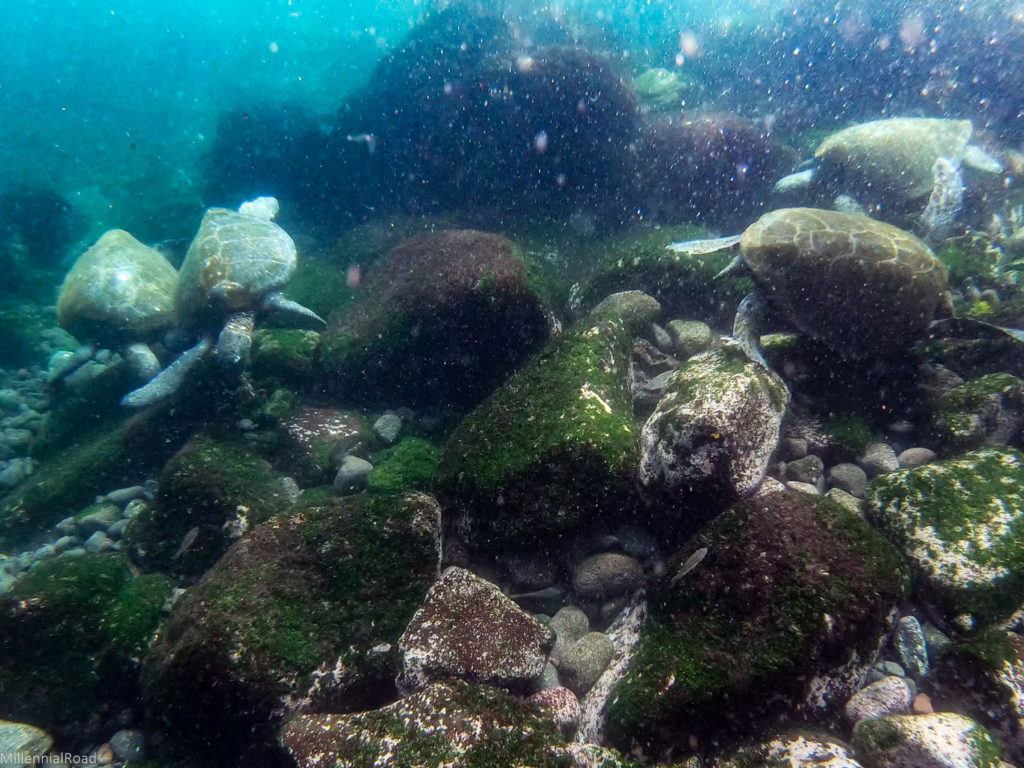
There were so many sea turtles that I lost count, frequently seeing up to eight turtles within a single view. In total, we probably saw between 75-100 sea turtles during this one snorkel excursion.
As I swam by one turtle after the next, each of them continued as before, drifting with the sea, seemingly unphased by our presence.
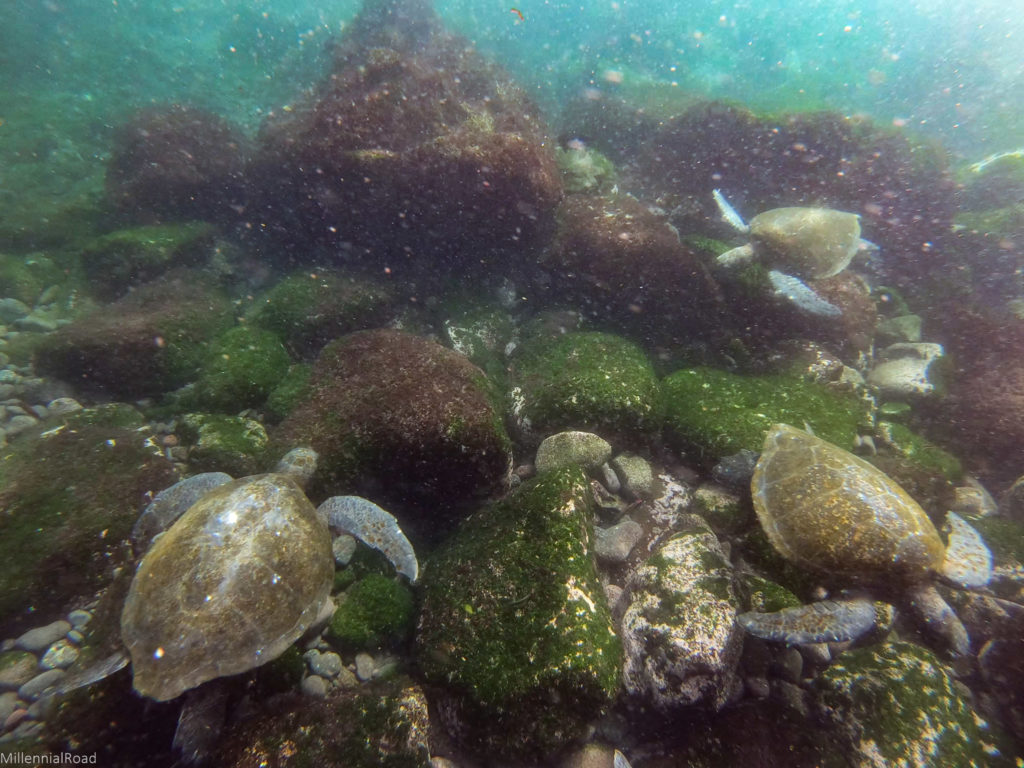
Most of the turtles just floated carelessly, swaying with the movement of the current. We came across a few entertaining exceptions.
The turtles that wanted to sleep would wedge their bodies between rocks to keep from drifting in the current.

Lifting my head from the water and scanning the scene, I spotted two penguins. Having learned from prior snorkels, I knew to approach gently and quietly so as not to scare them.
It worked. The penguins stayed right where they were, and I could swim within two feet of them for about 30 seconds before they decided to move away. For those 30 seconds, it felt like these penguins almost trusted me, and that felt amazing.
When they decided to swim away, they didn’t zip off like a bullet at first, similar to the previous times. This time they just swam around the area slowly (for a penguin) before darting off.
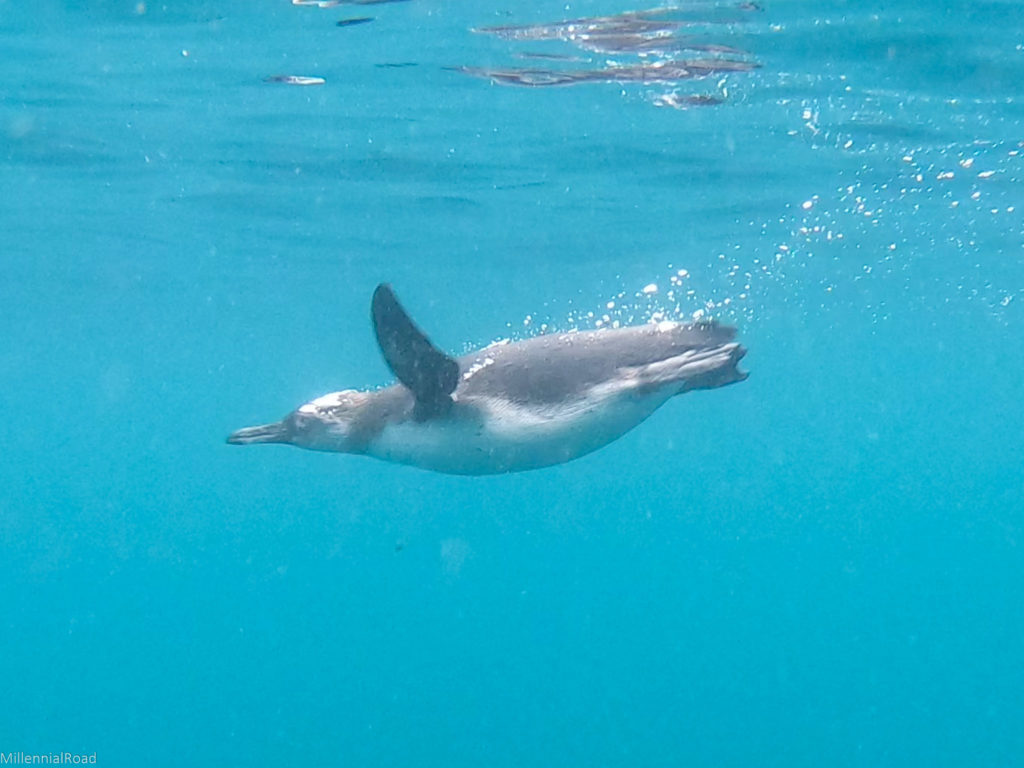
Because of this, I had an excellent opportunity to watch them swim for several seconds. Like many other marine animals we’ve seen, they look spectacular beneath the water.
As we continued to make our way around the snorkel path, we eventually came back upon the same two penguins (presumably), but they were lounging on a rock together this time.
This rock was incredibly picturesque. There was a sea lion, an iguana, and these two penguins all sitting on it, with the blue and white waves crashing over the edges of the rocky boulder. See if you can spot the iguana!
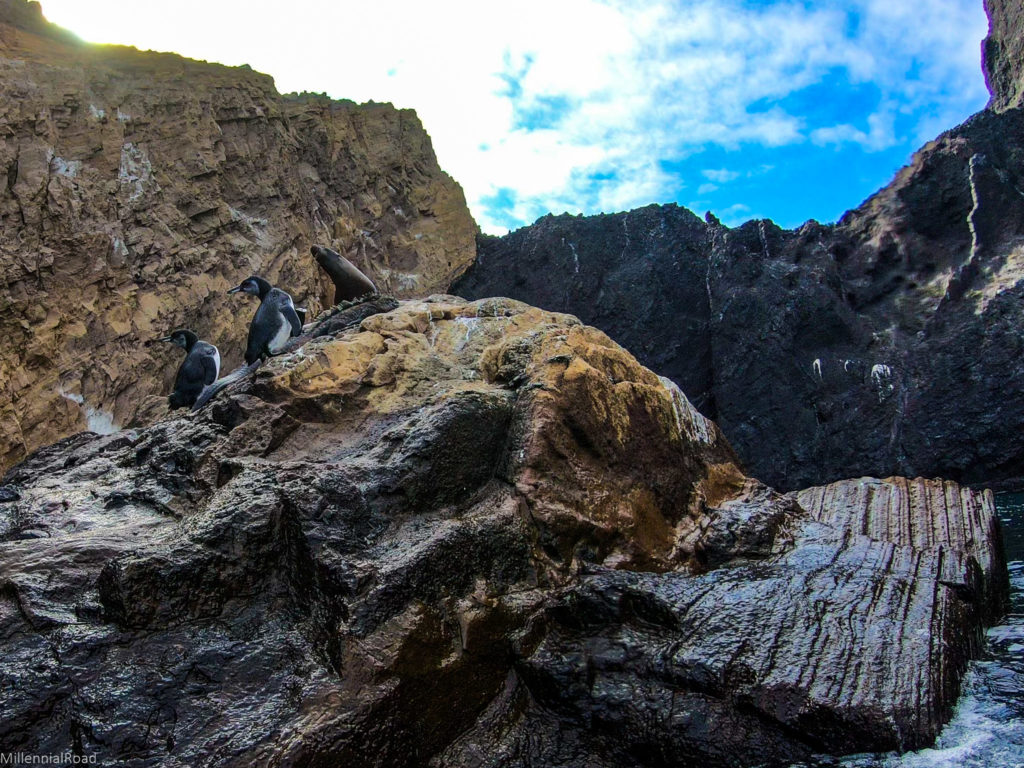
The current was rough in this area, but I fought to maintain my position for as long as possible to continue watching these animals bask in the warm rays of the sun. What a nice break from the chilly, tumultuous sea for them.

Embarking on one of our longer boat journeys, we navigated across the equator and shared celebratory drinks while crossing to commemorate the occasion. After 12 days of exploring the Galápagos Islands, and with several more days to go, we certainly had a lot to celebrate.
Want to read more? Continue reading about the colorful paradises of Santiago Island and Rábida Island.
If you missed it, go back and read about the incredible encounters we had with marine wildlife on Isabela Island.

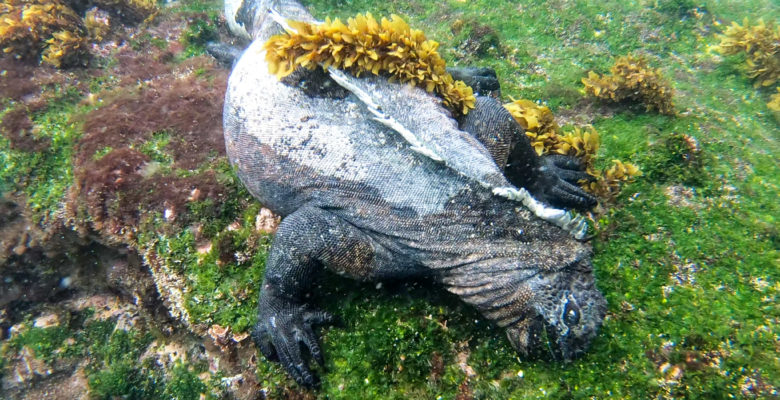
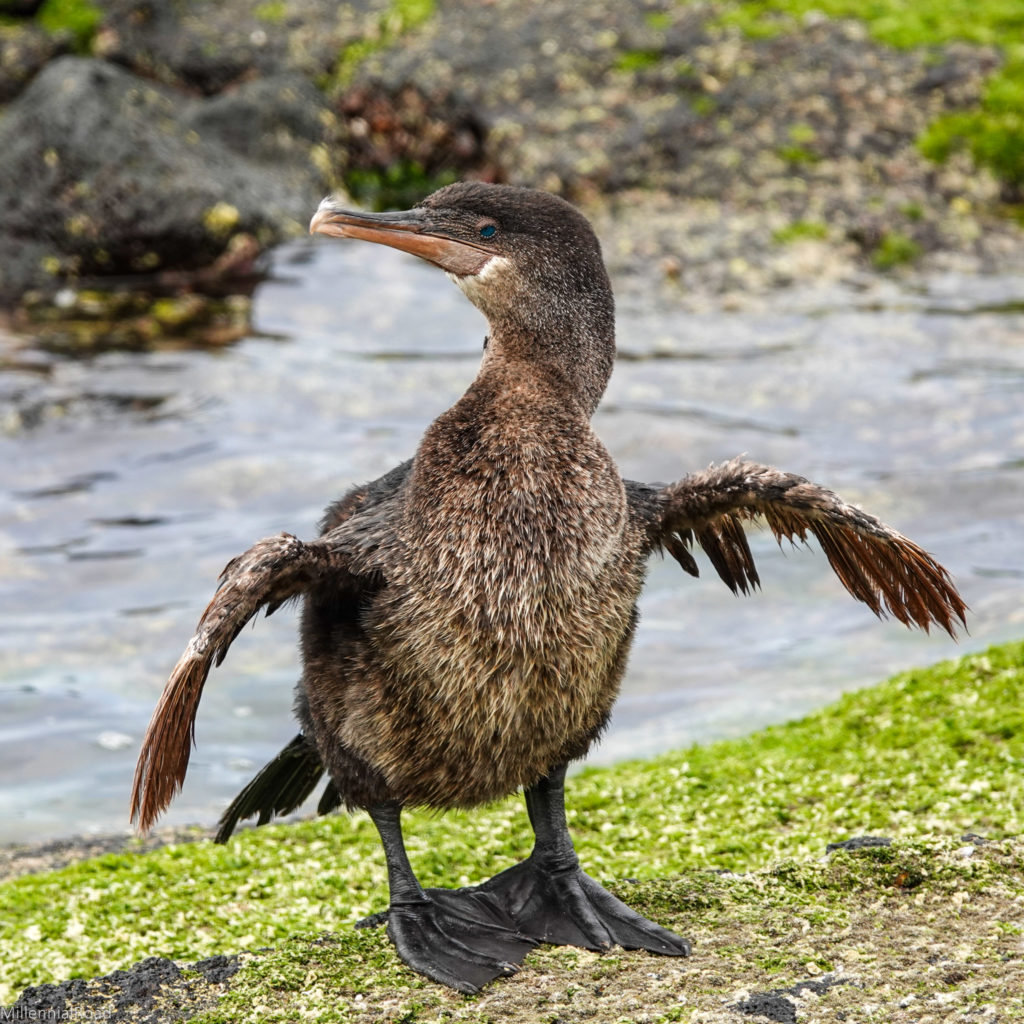
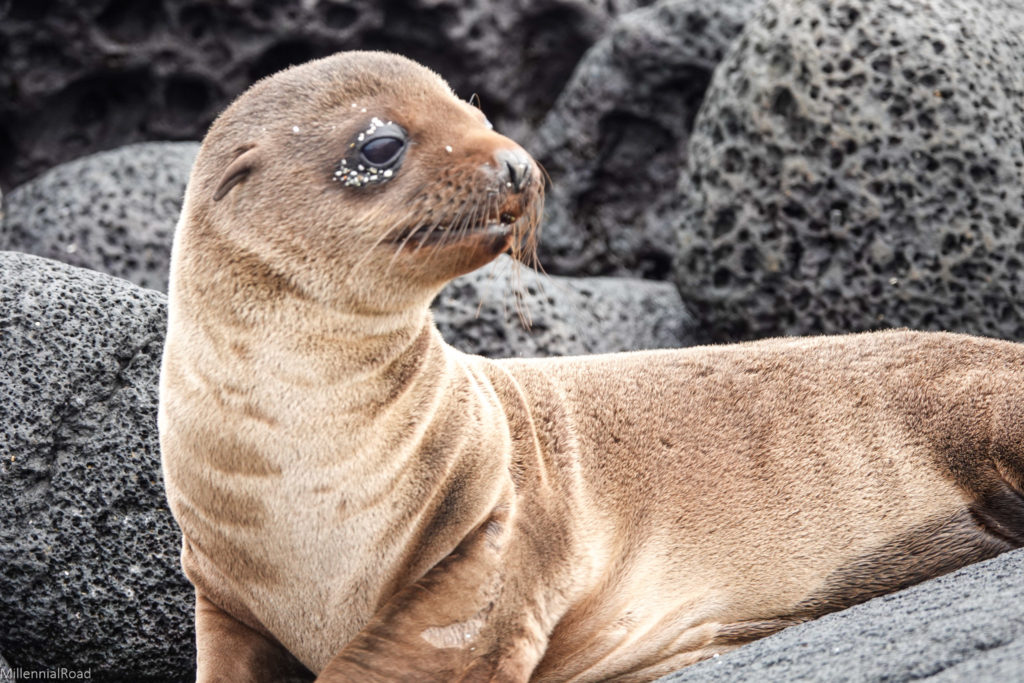
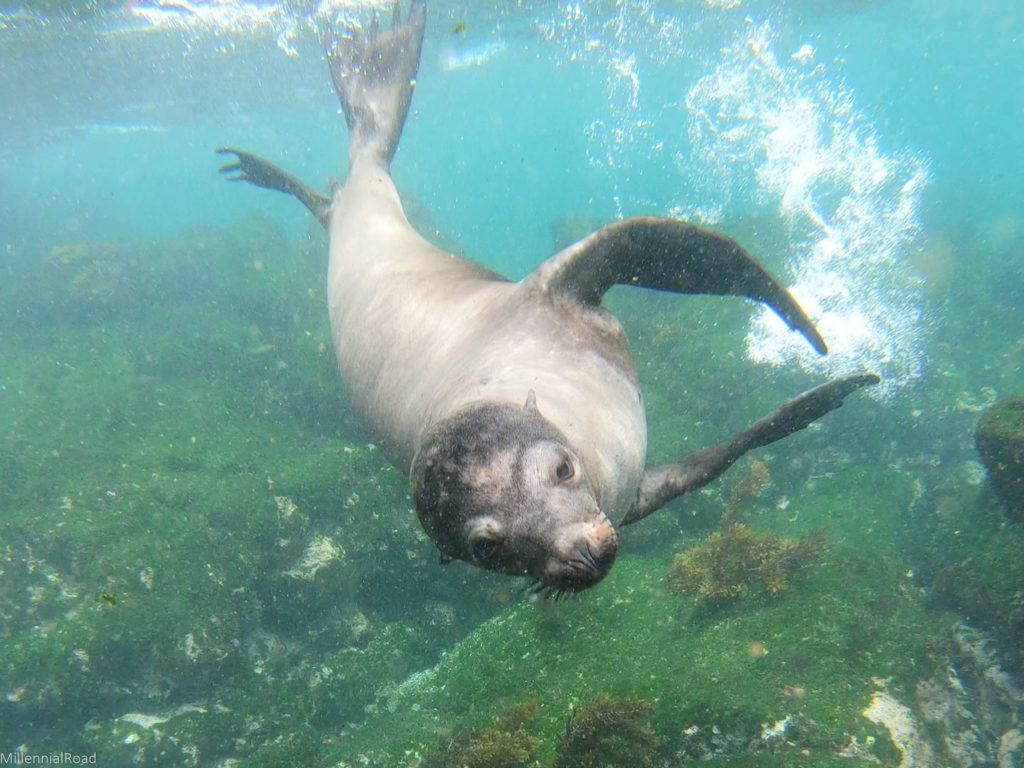
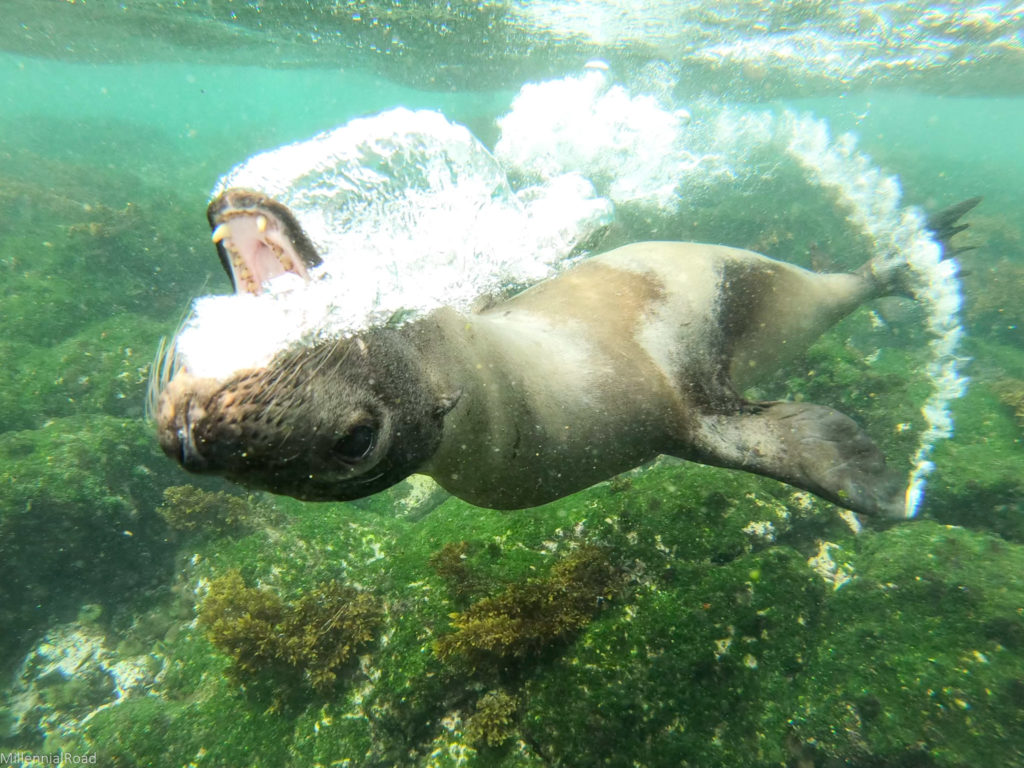
Leave a Reply